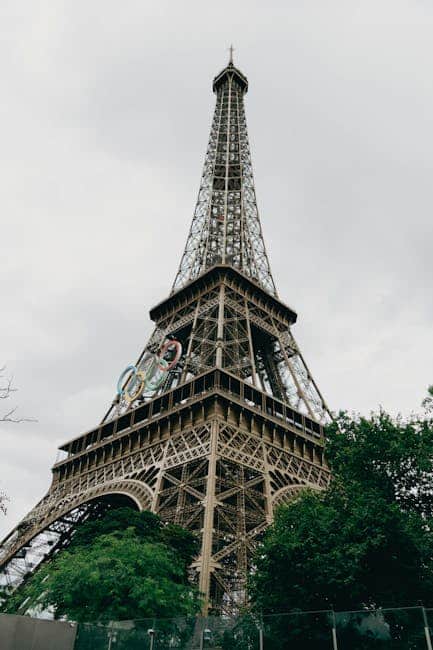The History of Chicago’s Architectural Marvels
Chicago, often dubbed the “Windy City,” is renowned not just for its vibrant culture and deep-dish pizza, but also for its awe-inspiring architecture. From the towering skyscrapers that pierce the sky to the intricate designs of historic buildings, the city is a living museum of architectural innovation. This blog post will journey through the history of Chicago’s architectural marvels, highlighting key landmarks, influential architects, and the evolution of design in this iconic city.
The Birth of the Skyscraper
Chicago’s architectural significance can be traced back to the late 19th century, particularly after the Great Chicago Fire of 1871. This catastrophic event, which destroyed much of the city, paved the way for a new era of construction and innovation. Out of the ashes rose the world’s first skyscraper, the Home Insurance Building, completed in 1885.
The Home Insurance Building
The Home Insurance Building, designed by architect William Le Baron Jenney, is often considered the world’s first skyscraper. Standing at 10 stories tall, it utilized a steel frame construction technique, which was revolutionary at the time. This method allowed for taller and more stable buildings, setting the stage for the skyscrapers we see today.
The Chicago School of Architecture
The late 19th and early 20th centuries saw the emergence of the Chicago School of Architecture, characterized by its emphasis on steel-frame construction, large plate-glass window areas, and limited exterior ornamentation. This movement was instrumental in shaping the skyline of modern-day Chicago.
Louis Sullivan: “Form Follows Function”
Louis Sullivan, often referred to as the “father of skyscrapers,” was a prominent figure in the Chicago School. His philosophy of “form follows function” influenced many architects of his time and beyond. Sullivan’s work is exemplified in buildings like the Auditorium Building and the Carson, Pirie, Scott and Company Building, both of which remain iconic structures in Chicago.
The Rise of the Modern Skyscraper
The 20th century saw the rise of modern skyscrapers, with Chicago at the forefront of this architectural evolution. These buildings not only reached unprecedented heights but also incorporated innovative designs and materials.
The Willis Tower (formerly Sears Tower)
Completed in 1973, the Willis Tower, originally known as the Sears Tower, held the title of the world’s tallest building for 25 years. Designed by architect Bruce Graham and structural engineer Fazlur Rahman Khan of Skidmore, Owings & Merrill, the building stands at a staggering 1,450 feet (442 meters). Its bundled tube design was a groundbreaking concept that provided both stability and aesthetic appeal.
John Hancock Center
Another iconic skyscraper is the John Hancock Center, completed in 1969 and also designed by Skidmore, Owings & Merrill. This 100-story building features a distinctive X-bracing exterior, which not only adds to its visual appeal but also provides structural support. The John Hancock Center remains one of the most recognizable buildings in the Chicago skyline.
Art Deco and the Interwar Period
The interwar period brought about the Art Deco movement, leaving a lasting impact on Chicago’s architectural landscape. This style is characterized by its bold geometric shapes, lavish ornamentation, and use of new materials like chrome and stainless steel.
The Chicago Board of Trade Building
Completed in 1930, the Chicago Board of Trade Building is a prime example of Art Deco architecture. Designed by Holabird & Root, the building features a limestone facade, intricate carvings, and a 31-foot tall statue of Ceres, the Roman goddess of agriculture, atop its roof. This building remains an iconic symbol of Chicago’s financial district.
Post-Modernism and Contemporary Architecture
The latter half of the 20th century and the early 21st century saw the emergence of post-modernism and contemporary architecture in Chicago. These styles blend elements of past architectural movements with modern design principles.
875 North Michigan Avenue (formerly John Hancock Center)
One notable example of post-modernism is the 875 North Michigan Avenue building, originally known as the John Hancock Center. Designed by Adrian Smith of Skidmore, Owings & Merrill, this building incorporates elements of the International Style with a modern twist. Its sleek, glass facade and unique setbacks make it a standout in the Chicago skyline.
The Aqua Tower
Completed in 2009, the Aqua Tower, designed by architect Jeanne Gang of Studio Gang, is a stunning example of contemporary architecture. This 82-story mixed-use skyscraper features undulating balconies that give the building a distinctive, wave-like appearance. The Aqua Tower has received numerous awards for its innovative design and sustainability features.
Preservation of Chicago’s Architectural Heritage
As Chicago continues to evolve, preserving its architectural heritage remains a priority. Numerous organizations and initiatives are dedicated to maintaining the city’s historic buildings and landmarks.
Landmark Status and Preservation Efforts
Many of Chicago’s architectural marvels have been designated as landmarks, ensuring their preservation for future generations. The Chicago Landmarks Commission plays a crucial role in identifying and protecting these historic structures. Additionally, non-profit organizations like Preservation Chicago advocate for the preservation of the city’s architectural heritage.
Exploring Chicago’s Architectural Marvels
For those interested in exploring Chicago’s architectural wonders, there are numerous resources and tours available. The Chicago Architecture Center offers a variety of guided tours, including boat tours along the Chicago River, walking tours, and bus tours. These tours provide an in-depth look at the city’s architectural history and offer insights into the design and construction of its iconic buildings.
Chicago Architecture Biennial
The Chicago Architecture Biennial is another excellent opportunity to delve into the world of architecture. This biennial event showcases the work of architects, designers, and artists from around the globe, highlighting innovative ideas and exploring the future of architecture. The event includes exhibitions, lectures, and workshops, making it a must-visit for architecture enthusiasts.
Conclusion
Chicago’s architectural marvels are a testament to the city’s rich history, innovative spirit, and commitment to preserving its heritage. From the pioneering skyscrapers of the late 19th century to the cutting-edge designs of today, Chicago’s skyline is a dynamic and ever-evolving landscape. Whether you’re an architecture aficionado or simply a curious traveler, exploring the architectural wonders of Chicago is a journey through time and creativity.
By understanding the history and significance of these buildings, we can appreciate the artistry and engineering that have shaped one of the world’s most iconic cities. So, the next time you find yourself in the Windy City, take a moment to look up and marvel at the architectural masterpieces that define Chicago’s skyline.


